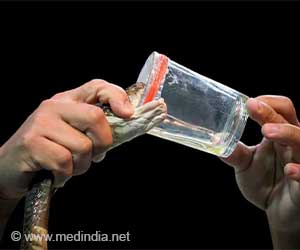The skin may play a role in regulating blood pressure and heart rate, the discovery was made by the University of Cambridge and the Karolinska Institute scientists.

TOP INSIGHT
The study suggests that our skin's response to low levels of oxygen may have substantial effects on how the heart pumps blood through the body.
The condition is often associated with reduced flow of blood through small blood vessels in the skin and other parts of the body, a symptom that can get progressively worse if the hypertension is not treated.
Previous research has shown that when a tissue is starved of oxygen - as can happen in areas of high altitude, or in response to pollution, smoking or obesity, for example - blood flow to that tissue will increase. In such situations, this increase in blood flow is controlled in part by the ’HIF’ family of proteins.
To investigate what role the skin plays in the flow of blood through small vessels, a team of researchers from Cambridge and Sweden exposed mice to low-oxygen conditions. These mice had been genetically modified so that they are unable to produce certain HIF proteins in the skin.
"Nine of ten cases of high blood pressure appear to occur spontaneously, with no known cause," says Professor Randall Johnson from the Department of Physiology, Development and Neuroscience at the University of Cambridge.
"Our study was set up to understand the feedback loop between the skin and the cardiovascular system. By working with mice, we were able to manipulate key genes involved in this loop."
Mice lacking specific proteins controlled by the HIF’s also responded similarly. In addition, the researchers showed that even the response of normal, healthy mice to oxygen starvation was more complex than previously thought.
In the first ten minutes, blood pressure and heart rate rise, and this is followed by a period of up to 36 hours where blood pressure and heart rate decrease below normal levels.
By around 48 hours after exposure to low levels of oxygen, blood pressure and heart rate levels had returned to normal.
Loss of the HIF proteins or other proteins involved in response to oxygen starvation were found to dramatically change the start and duration of the process.
"These findings suggest that our skin’s response to low levels of oxygen may have substantial effects on how the heart pumps blood through the body," adds first author Dr Andrew Cowburn, also from Cambridge.
"Low oxygen levels - whether temporary or sustained - are common and can be related to our natural environment or factors such as smoking and obesity.”
“We hope that our study will help us better understand how the body’s response to such conditions may increase our risk of - or even cause - hypertension."
Professor Johnson adds: "Given that skin is the largest organ in our body, it perhaps shouldn’t be too surprising that it plays a role in regulating fundamental mechanism such as blood pressure.
But this suggests to us that we may need to take a look at other organs and tissues in the body and see how they, too, are implicated."
Source-Eurekalert
 MEDINDIA
MEDINDIA



 Email
Email










